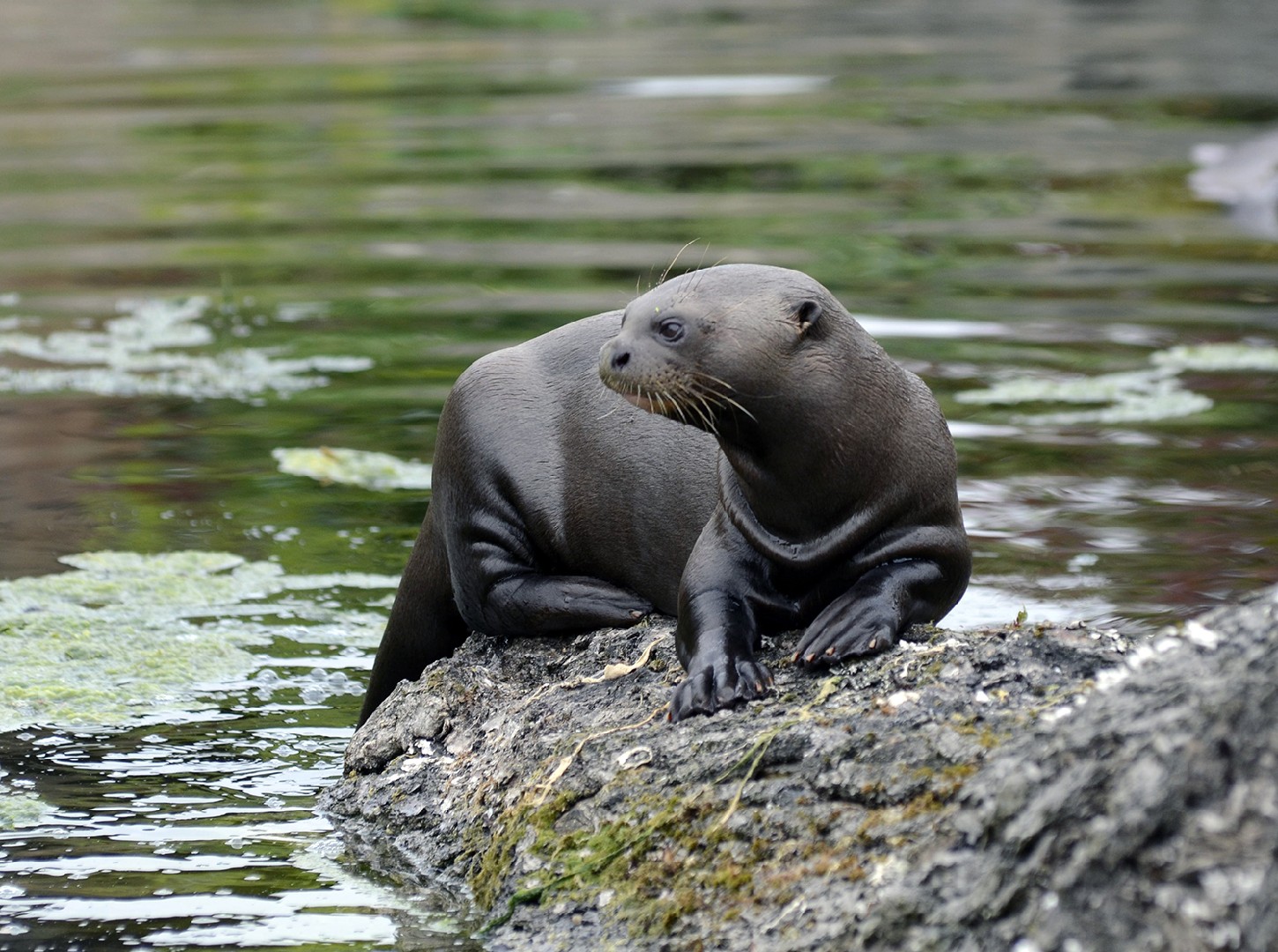Giant otter
A species of Giant otter, Also known as Giant brazilian otter Scientific name : Pteronura brasiliensis Genus : Giant otter
Giant otter, A species of Giant otter
Also known as:
Giant brazilian otter
Scientific name: Pteronura brasiliensis
Genus: Giant otter
Content
Description General Info
 Photo By Steve Wilson , used under CC-BY-2.0 /Cropped and compressed from original
Photo By Steve Wilson , used under CC-BY-2.0 /Cropped and compressed from original Description
The giant otter (Pteronura brasiliensis) is a common type of otter in the Amazon rainforest. The river systems in which it is native include the Amazon, the Orinoco and the Río de la Plata.
General Info
Lifespan
12-15 years
Diet
Giant otter primarily feed on freshwater mussels, clams, and small crabs, utilizing their elongated, flattened molars to effectively crush shells. Interestingly, during the dry season, they broaden their feeding preferences to also include ripened fruits and occasionally fish.
Appearance
Giant otter is a large semi-aquatic mammal with a distinctive torpedo-shaped body covered in dense, brown fur. It possesses a long, flat tail and webbed feet, well adapted for swimming. The most notable feature is its dorsally positioned eyes and ears, ideal for the aquatic environment. It has a distinctive creamy-white facial and neck markings. No significant differences in appearance due to age, gender, or subspecies have been reported.
Behavior
Giant otter exhibits a unique social structure residing in small, matriarchal family groups. Its behavior involves cooperative hunting, with a dietary focus on crustaceans. Notably, it uses its elongated, articulated fingers to extract prey from crevices. Habitat is Baroque-style territories, marked using anal scent glands and defended aggressively.
Population
Decreasing
Scientific Classification
Phylum
Chordates Class
Mammals Order
Carnivores Family
Mustelids Genus
Giant otter Species
Giant otter